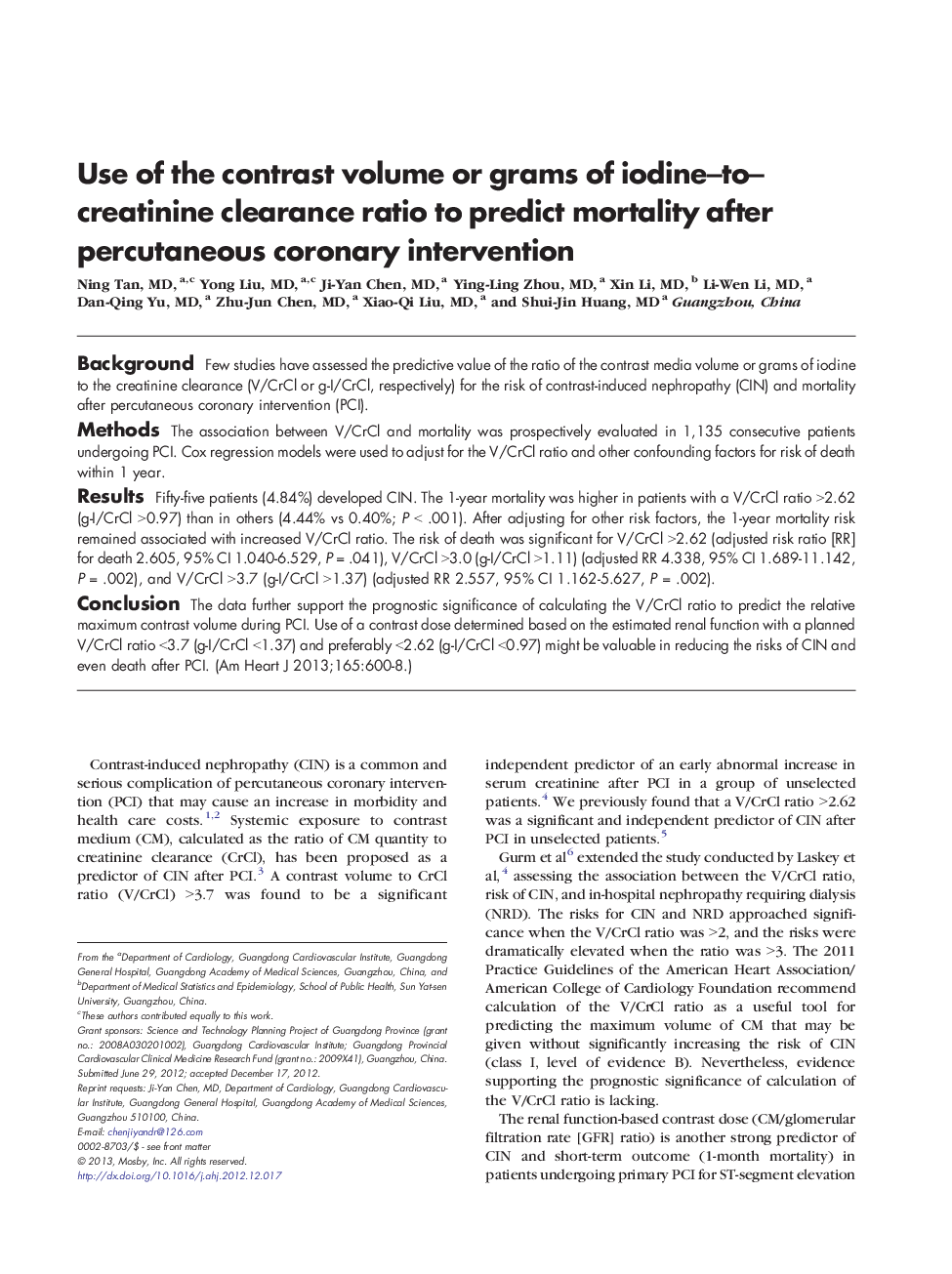| Article ID | Journal | Published Year | Pages | File Type |
|---|---|---|---|---|
| 5928869 | American Heart Journal | 2013 | 9 Pages |
BackgroundFew studies have assessed the predictive value of the ratio of the contrast media volume or grams of iodine to the creatinine clearance (V/CrCl or g-I/CrCl, respectively) for the risk of contrast-induced nephropathy (CIN) and mortality after percutaneous coronary intervention (PCI).MethodsThe association between V/CrCl and mortality was prospectively evaluated in 1,135 consecutive patients undergoing PCI. Cox regression models were used to adjust for the V/CrCl ratio and other confounding factors for risk of death within 1 year.ResultsFifty-five patients (4.84%) developed CIN. The 1-year mortality was higher in patients with a V/CrCl ratio >2.62 (g-I/CrCl >0.97) than in others (4.44% vs 0.40%; P < .001). After adjusting for other risk factors, the 1-year mortality risk remained associated with increased V/CrCl ratio. The risk of death was significant for V/CrCl >2.62 (adjusted risk ratio [RR] for death 2.605, 95% CI 1.040-6.529, P = .041), V/CrCl >3.0 (g-I/CrCl >1.11) (adjusted RR 4.338, 95% CI 1.689-11.142, P = .002), and V/CrCl >3.7 (g-I/CrCl >1.37) (adjusted RR 2.557, 95% CI 1.162-5.627, P = .002).ConclusionThe data further support the prognostic significance of calculating the V/CrCl ratio to predict the relative maximum contrast volume during PCI. Use of a contrast dose determined based on the estimated renal function with a planned V/CrCl ratio <3.7 (g-I/CrCl <1.37) and preferably <2.62 (g-I/CrCl <0.97) might be valuable in reducing the risks of CIN and even death after PCI.
